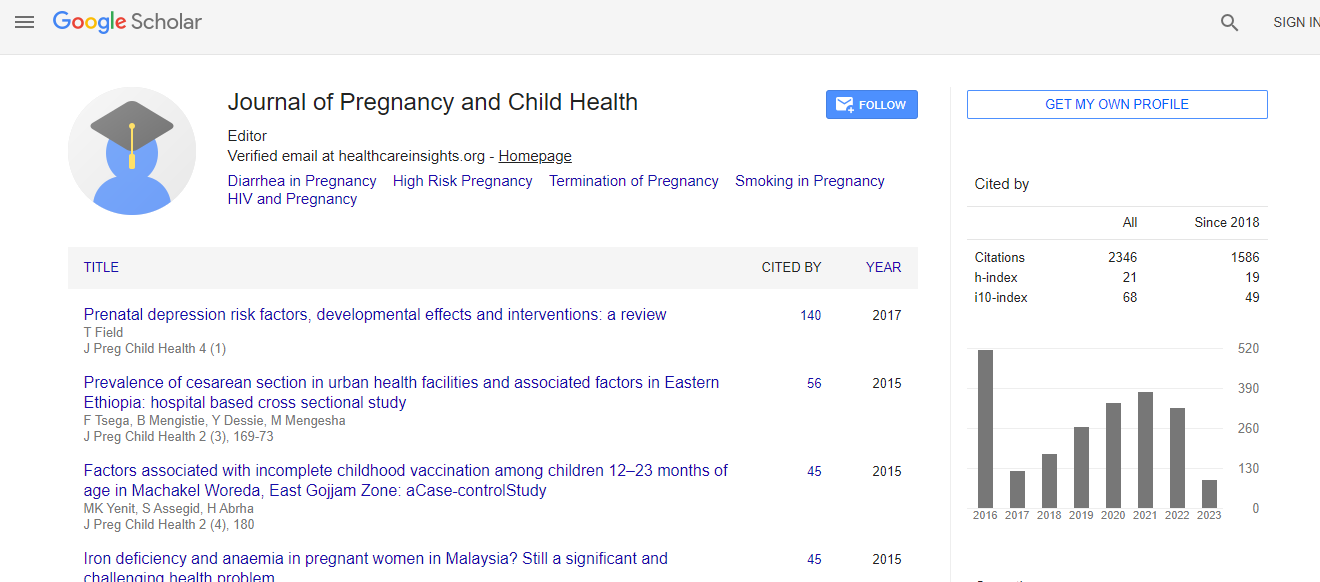Research Article
Examining the Factors that Moderate and Mediate the Effects on Depression during Pregnancy and Postpartum
| Kazi Rahman1*, Angela Bowen2and Nazeem Muhajarine2 | |
| 1Health Science Building, 107 Wiggins Road, UniversityofSaskatchewanSaskatoon, Saskatchewan, Canada | |
| 2Department of Community Health & Epidemiology, Health Science Building, 107 Wiggins Road, University of Saskatchewan Saskatoon, Saskatchewan, Canada | |
| Corresponding Author : | Kazi Rahman Department of Community Health & Epidemiology Health Science Building, 107 Wiggins Road University of Saskatchewan Saskatoon Saskatchewan, Canada S7N-5E5 Tel: 3067164834 Fax: 3069667920 E-mail: kmr506@mail.usask.ca |
| Received July 25, 2014; Accepted October 09, 2014; Published October 15, 2014 | |
| Citation: Rahman K, Bowen A, Muhajarine N (2014) Examining the Factors that Moderate and Mediate the Effects on Depression during Pregnancy and Postpartum. J Preg Child Health 1:116. doi: 10.4172/2376-127X.1000116 | |
| Copyright: © 2014 Rahman K, et al. This is an open-access article distributed under the terms of the Creative Commons Attribution License, which permits unrestricted use, distribution, and reproduction in any medium, provided the original author and source are credited. | |
Abstract
Background: This research report will address the knowledge gap in understanding the role of risk factors as moderators or mediators to explain the variability in the magnitude of exposure and the causal pathway for antenatal and postpartum depression.
Methods: Using Feelings in Pregnancy and Motherhood (FIP) longitudinal study, 649 pregnant women were interviewed three times during pregnancy and postpartum. Depression status (measured in EPDS) in late pregnancy and postpartum were two outcomes of interest. Socio-demographic predictors were considered as moderators, and behavioral and psychosocial variables were considered as mediators. Moderators and mediators were tested through series of regression analysis.
Results: In modeling moderating effects in late pregnancy, low income women who were in poor partner relationships (β=1.54; p<0.05) and partnered women who reported having used recreational drugs (β= -1.62; p<0.05) were more likely to be depressed. Young mothers with low social support (β= 1.04; p=0.15) and Aboriginal mothers with low social support (β= 1.12; p=0.17) were noted to have depressive symptoms in late pregnancy. In mediating analysis for late pregnancy, psychosocial mediators - stress, social support, and relationship satisfaction, and behavioral factors - smoking and recreational drug use exerted mediating effect for depressive symptoms. In moderating analysis for postpartum, Aboriginal women who had never exercised in late pregnancy were found to be depressed at postpartum. For mediating effects in postpartum, relationship satisfaction, stress, and smoking were significant.
Conclusion: The moderating and mediating role of the risk factors could be strategically used to provide tailored programs to women who experience depression during pregnancy and postpartum.

 Spanish
Spanish  Chinese
Chinese  Russian
Russian  German
German  French
French  Japanese
Japanese  Portuguese
Portuguese  Hindi
Hindi 
